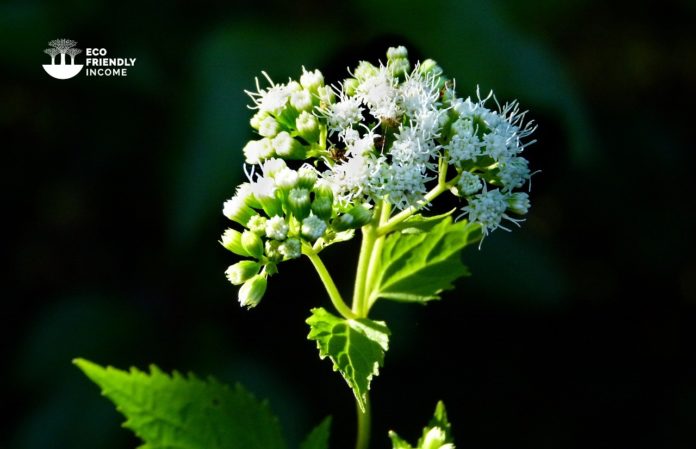A field guide on how to identify and propagate White Snakeroot (Ageratina altissima), a zone 2 perennial shrub native to North America.

Hardiness Zone: 2-8

Soil Type: Well-drained Chalk, Clay, or Loam.

Water: Low to Normal.

Exposure: Partial Sun.
How to Identify White Snakeroot (Ageratina altissima)
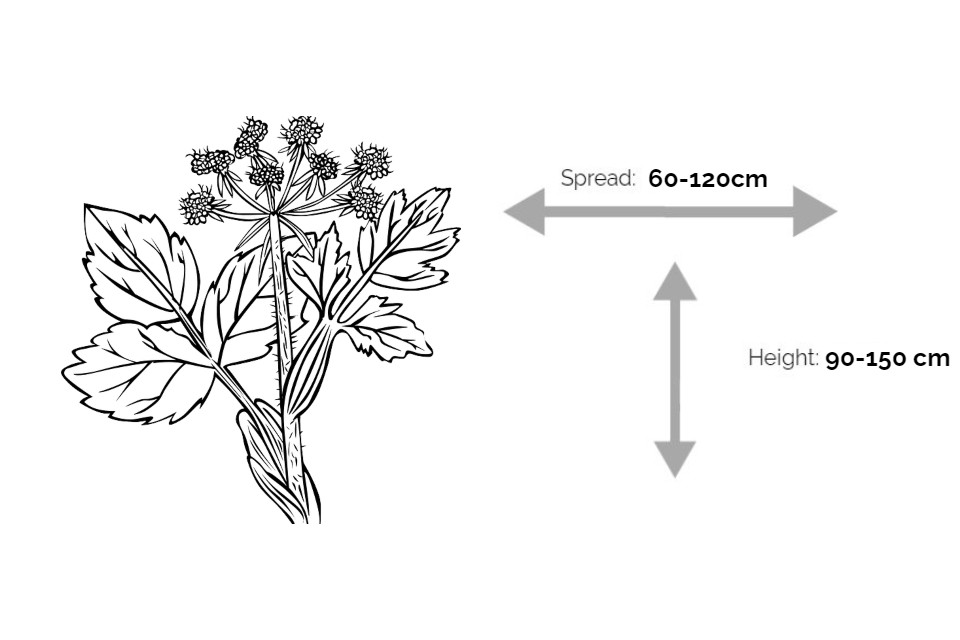
Leaves
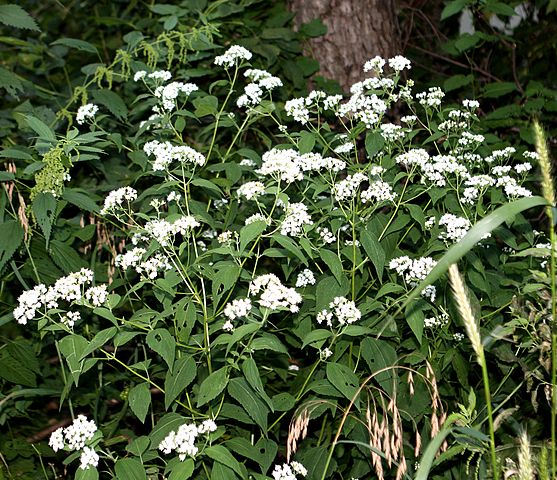
White snakeroot leaves grow in opposite arrangements, are lance-shaped to inversely egg-shaped, and have serrated margins. They are typically about 3-6 inches long and 1-2 inches wide.
Flowers
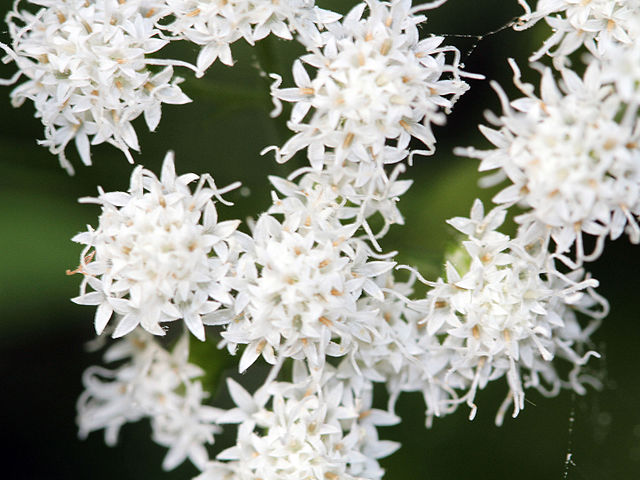
White snakeroot flowers are small and white. They grow in clusters at the end of the stems.
Each flower has 5 petals that form a star shape.
Flowering Season
White snakeroot is one of those plans that bloom very late in the season, typically that is from August to October.
Habitat
White snakeroot is a perennial herb that grows in moist, shady areas in the eastern and central United States.
You can find it growing in woods, thickets, clearings, ditches, meadows, and beside lakes and streams.
It’s especially resilient in the cold since it’s found as far north as the North-West territories in Canada.
Wildlife Value
White snakeroot is a valuable wildlife plant since it blooms so late.
It provides some of the last sources of nutrients for pollinators, butterflies, or moths that need to prepare for winter or migrate.
Warning: White snakeroot is toxic to most animals, keep away from any animal likely to eat it.
How to Propagate White Snakeroot (Ageratina altissima)
Snakeroot shouldn’t be hard to propagate at all since it has a tendency to grow like a weed.
You can propagate white snakeroots by taking cuttings, dividing them, or by sowing their seeds.
- Stem cuttings are when you cut off the new year’s vigorous growth, and plant it in a special soil mix and propagator to encourage new root growth.
- Dividing works great on plants that spread by underground roots called rhizomes, you find the clones and separate them from their mother plants.
- For germination, you’ll need to collect their seeds which are ripe for picking quite late in the season.
Let’s get into details on these methods:
Stem Cuttings
It’s pretty easy to propagate white snakeroot by taking stem cuttings because the plant grows fast and roots readily.
Here’s how to do it:
- Choose a healthy, vigorous stem from your white snakeroot plant.
- Cut the stems at a 45-degree angle using a sharp knife. Make each cutting about 4-6 inches long, and always cut the bottom part below a node.
- Remove the leaves from the bottom 2/3 of the stem, and pinch off the very freshest growth at the top.
- Dip the cut end of the stem in rooting hormone powder, then knock off the excess with a light flick.
- Place the stems in a moistened propagation mix, we recommend 3:1 perlite to potting soil.
- Cover the pot with a plastic bag and secure it with a rubber band. Alternatively use some small plastic propagators.
- Place the pot in a warm, well lit spot but away from direct sunlight.
- Check the moisture level in the potting mix regularly and water as needed.
White snakeroot cuttings should start to make roots within 2-4 weeks.
Once the roots are established, transplant the stem into a larger pot or into the garden.
Division
Since white snakeroot readily spreads by rhizomes, dividing the plants is pretty easy.
The best time to divide them is in early spring.
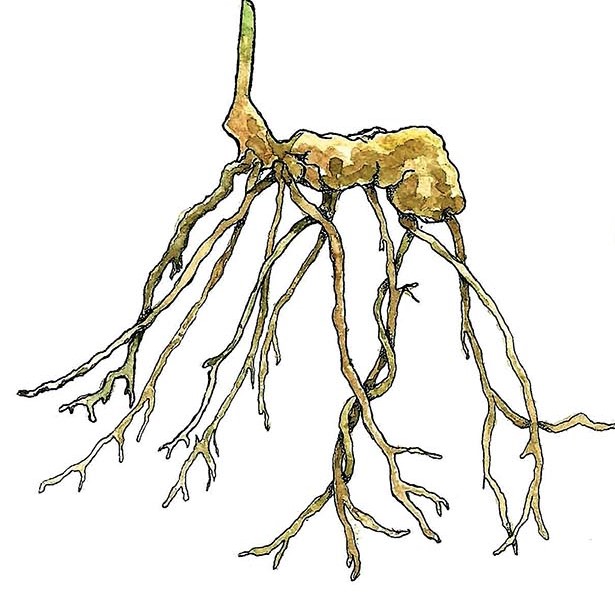
Here’s how to do it:
- Dig up the white snakeroot rhizomes with a shovel.
- Cut the rhizomes into smaller pieces with a sharp knife, make sure each piece is thick enough and has some minor roots.
- Place the rhizome pieces in a bucket or container, fill with water, and let the rhizomes soak in the water for 24 hours.
- Transfer the rhizome into a wooden box or tub, put some compost in and place the rhizomes horizontally.
- Cover with soil and compact, water thoroughly.
- Cover the tub so the moisture holds well and monitor.
You don’t need to put it in the sun just yet, better to keep it in a shaded area until sprouts appear.
When they do, remove the cover, and place it in a well-lit area but not in direct sunlight.
When the shoots are sturdy enough, you can empty the tub and separate all the rhizomes, and individually plant them.
By Seed
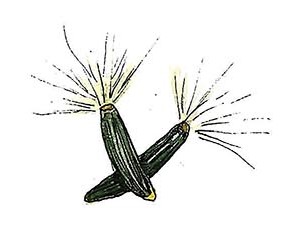
You can also propagate white snakeroot with the seeds if you’re fast enough to get them before they fly away!
Their seeds are similar to dandelions, when they’re ready it won’t take much for the wind to carry them away.
You can always order them online at plant world seeds, or wait until late summer to fall for the seeds to appear.
White snakeroot seeds can germinate without cold treatment but the success rate will greatly increase with one.
- For best results, sow immediately onto a good soil-based compost.
- Cover the seeds with fine grit or compost to approximately their own depth.
- Keep them unheated, they can germinate quicker if kept at 15 to 20 degrees C.
Some may germinate right away, others may not germinate until a fair amount of time.
Cold stratification: Put a batch of seeds in a ziplock, tag and date them, and put them in the fridge for 60-90 days before sowing.
That’s it! that should have you covered on some great techniques to propagate white snakeroot.
Want to propagate like a pro? Check out our plant propagation guide.
Maybe you’re looking for other zone 2 plants, check out our list!

